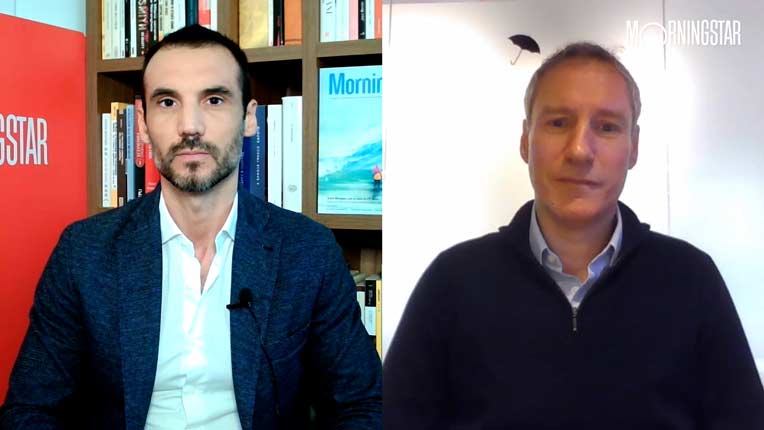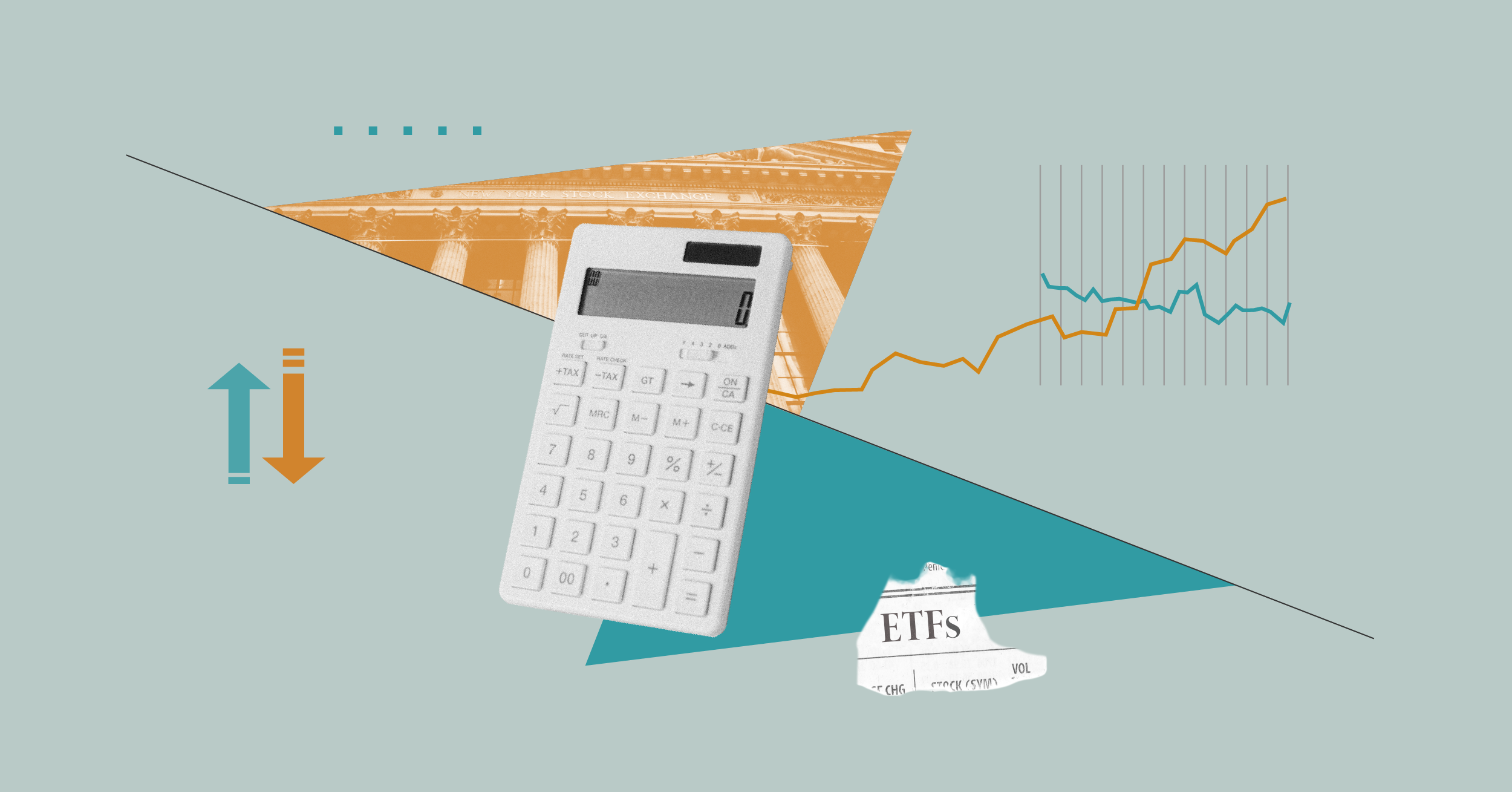Jason Stipp: I'm Jason Stipp for Morningstar. Although U.S. data reports have raised some hopes for the economy, Morningstar's Bob Johnson, our director of economic analysis, says he is not the most optimistic guy around. He is here to explain. Thanks for joining me Bob.
Bob Johnson: Great to be here.
Stipp: You have six reasons you say why you are not the most optimistic guy on the street. The first one has to do with government spending and that it will be a headwind for us. It has been and will continue to be. What's your take on that?
Johnson: Yes. The government represents about 20% of gross domestic product. So it's not a small number, and I have been whining endlessly about Europe having difficulty getting out of the recession because there government is about 40% of their economy. The more they cut government, the more they cut their own GDP and the more they get in that vicious downward cycle. We are lucky here that government is a smaller percentage of the economy at about 20%. Nevertheless, it is hurting the economy; it has since 2010. And unfortunately the news for the year ahead is not good between the sequestration, winding down Iraq, winding down Afghanistan, wonderful things politically but not such good things dollars-and-cents-wise for the economy. Those things will continue to weigh as well as post office issues and various pension issues.
Stipp: So more pain from government coming up. Number two, the auto industry, which has been an important part of the recovery, you say is kind of peaking out at this point as far as auto sales.
Johnson: Yeah. I hope I get proven wrong on this one. I very well could be because I am just looking at numbers here. But we're kind of at 15.4 million where most of the forecasts centre, that's unit per year in autos for 2013. And a typical recovery sees a peak somewhere in the 16 to 18 million level in terms of cars. We're darn close to that right now. I mean, it's been a huge engine of growth in this recovery. We've gone from nine to 16 million, but now if we go from 16 million to 17 million, it's like not a big deal. It's not going to be a big help to the economy.
Stipp: Number three. It's kind of two sides of the same coin. So we are seeing some lower food prices, but when that happens you also see less investment, for example, in the farming industry.
Johnson: Yeah, I think food prices have been coming down for some time now, and they got an extra kick in the pants, if you will, last Friday when government crop reports came out and indicated that the inventories were a little bit bigger than they thought, production was a little better in South America, and the forecast for farm prices was probably downward, which impact farm income. That means less spending on farm equipment, and it means farm that land is worth less money probably than it previously was. So those are not good things for the economy.
Stipp: The fourth one involves China. We are probably still going to see growth from China but it will be a different kind of growth and that could be a headwind.
Johnson: Yeah. I mean, there's still even a lot of debate within our own firm about exactly how strong China is, and there is even a camp that says that might be a little bit soft. But even if they do return to growth, I think a lot of it will be more consumption-oriented growth. It's not going to be the copper, the lumber, the steel that has driven their export-driven economy. It's going to be more consumer-oriented goods. And it's not going to cause this big commodities boom, and it's not going to cause a rampant demand for Caterpillar equipment and so forth. So, it's going to hold back some of those things that benefited the last time China boomed, if we even grant that they are coming back.
Stipp: Number five is an important one for the U.S. economy, and that's the consumer. The consumer reports have been on a bit of a yo-yo, and market watchers have been excited and then depressed and excited and depressed about where the consumer is. Most recently they were excited because the last retail sales report was better than expectations. But you say the consumer is actually hobbling a little bit right now.
Johnson: Yeah. Given gasoline prices, given some of the weather and rebuilding issues with all the floods and hurricanes and so forth, it really has made some of the consumer numbers jump around a lot. But when you look at them year-over-year and average them, the trend is pretty clearly down. Again, you have to expect it with the payroll tax and so forth, but we've gone from roughly 3% year-over-year inflation-adjusted retail sales growth down to 1.7%, a pretty meaningful decline, and frankly roughly in line with what the payroll tax increase might suggest. So I think that certainly caused a little bit of a headwind.
We've had some weird things happen in the numbers, where we had a really great February and a totally disastrous March, and then everybody expected yet another disaster this month, and then it wasn't a disaster. You look at the data averaged year over year, and it still shows that slightly slowing trend. And the International Council of Shopping Centers data, as well, are kind of a little bit back in the dumper again. This latest week we’re down about 1% year-over-year growth again, which is pretty disappointing.
Stipp: So certainly some softness that you are seeing in the consumer when you take a broader perspective. Number six, Bob, is an area of the economy that has seemed pretty optimistic and pretty powerful, which is the housing recovery. But you say you should moderate some of your expectations for housing because of a certain couple of issues.
Bob: Yeah, and we've already seen that in some of the numbers. I had said pretty much like we're going to have over 1 million new housing starts this year with the real hope that we'd really get to 1.1 million. We’ve kind of gotten to the middle of the year here, and it looks like we're not we haven't had one month [with an annualized rate of more than] 1 million yet, so it's going to mean we had to be at 1.2 million by the end of the year to get to what I thought might be normal expectations. And there's been a shortage of land to build on. People don't want to live on the far-out locations, and when you get into near-end locations, there's no land available.
Lumber prices have gone up dramatically. Banks have remained tight in their lending, and consequently the housing starts and the assorted construction workers that go with that are not doing as well as we hoped. The silver lining is that means housing prices have gone up more, and that's really helped the wealth effect for consumers, and that's why the stock market is up and why consumer spending has done well even in light of relatively poor income growth.
Stipp: So some things will be holding back the housing recovery really for the intermediate term, But you say--and you mentioned that the wealth effect is one positive--there are a few other things. Although we might want to moderate our expectations for the economy, there are some bright spots.
Johnson: Absolutely. I think inflation has been under very, very good control. I think, when all is said and done, somewhere in the middle of the year we'll probably get inflation down to a 1.5% year-over-year growth rate. That's just really dramatic. We really haven't seen that for a long, long time, and that's all in. That isn’t like leaving out gasoline and food or something. I mean, all in, we're at 1.5%. So that means, even if income isn't growing very fast, that money is going further than it used to, and we’re probably going to end up with two or three months in a row here where the month-to-month change in prices is actually going to be down. We're going to be three months of deflation.
Stipp: All right, Bob. Well, thanks for giving us some perspective on some of the economic issues and maybe some good reasons to moderate some overly optimistic expectations for the economy. Thanks for joining me today.
Johnson: Great to be here.
Stipp: For Morningstar, I'm Jason Stipp. Thanks for watching.




















